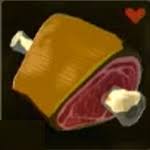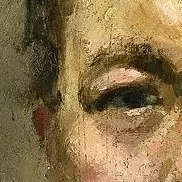Aside
For an extra boost to your enjoyment, consider listening to (Rimsky-Korsakov 2nd Symphony, Antar, movement 1: Vengeance)[https://youtu.be/Qd80g7wJWuQ?si=aZoRQ8PcU3_9OR_c]. This was the music that the artist listened to as he created the piece.
Ivan the Terrible and his son
A very sad piece indeed. Ivan the terrible’s mental illness came to a horrible climax one night when he saw his son’s pregnant wife walk by in a nightgown that exposed her under garments. Blind with rage, he struck his son in the head fataly.
The painting depicts Ivan the Terrible, stricken with grief and anguish as his son dies. The son, in tears, forgiving his father in some cosmic understanding as he lay dying.
On the surface, an example of how mental illness, left to take more and more control, can result in horrible consequences.
However, looking at the dates; the event occurred about 300 years before the painting was created. Why?
The political environment
The painting is an allegory of the assassination of Alexander II. Or rather the atrocity of the action itself and the consequences.
A group of far-left terrorists, bent on removing the autocratic tsarist government, killed A2 with a bomb in 1881; influenced by “Propaganda by the Deed,” hoping it would spark a revolution.
The painter not only witnessed the assassination, but also the hanging a few months later of the men who committed the act. He was horrified by the violence, he called them horrors of the contemporary world.
Aftermath
The act of terrorism failed and it would not be for another nearly 40 years, when things had gotten so bad and the tsars so weak that the Bolsheviks were able to succeed and establish a Soviet Republic, but only after killing basically everyone that knew how to do anything: Doctors, Lawyers, Farmers, etc. Leaving the country in tatters and the government free to be run by one person, who would go on to commit awful such atrocities that it made the whole history of the tsars look like childs play in comparison.


Where did you get “The son, in tears, forgiving his father in some cosmic understanding as he lay dying” Interperation from?
Also the “that it made the whole history of the tsars look like childs play in comparison." seems insanely absurd. The Soviet Union (I’m assuming more particularly Stalin) were absolutely horrid, killed and harmed a shit ton of people but to say that the Tzars were child’s play just seems completely ignorant
OK, here’s some bullet points with citations, but if you know something that you think I’m missing in my understanding, I am open to it, and I’ll change my essay if you convince me.
1928 is really when Stalin’s insatiability for power and domination come into full swing. Up until then he was small-time, basically only imprisoning, exiling or killing political opposition.
In order to rapidly industrialize Russia, Stalin sets mandatory production requirements for factories. Many find the numbers impossible to achieve and Stalin imprisons or executes those that fail.
Stalin takes land from small farmers and makes them work as not-slaves on their own farms, all the yields are sent off to be redistributed, five million die from famine. That’s the equivalent of almost the entire 2022 population of Massachusetts or Maryland. Or Paris could be completely exterminated of people about two and a half times.
In 1932 Stalin’s wife kills herself after years of abuse by Stalin. He makes sure the media, which he controls, says it was appendicitis.
In 1934, Stalin starts getting paranoid.
He executes about 70% of his own government and 80% of high-ranking military leaders because they have voiced opposition to him or his ideas at some point in the past.
3 million people are sent to concentration camps (gulags)
750,000 civilians are killed for little or no reason by Stalin’s secret police force.
In 1941 his son is captured by invading German forces. They offer for him to be returned as part of a prisoner swap, but Stalin refuses, believing him to have given himself up and joined their cause. He dies in a prison camp 3 years later.
There’s more, but let’s hear your side.
https://en.wikipedia.org/wiki/Joseph_Stalin
https://www.britannica.com/event/Battle-of-Stalingrad
https://www.bbc.co.uk/teach/joseph-stalin-national-hero-or-cold-blooded-murderer/zhv747h
Yeah Stalin sucked and is up there with worst leadership of all time but the Tzars also slaughtered, genocided, starved, enforced serfdom and threw away lives in pointless wars. Again, fuck Stalin may his soul be slow roasted next to Hitler’s in hell, but the Tzars deserve to be treated with as much derision
OK, do you have any examples - not to challenge you, I just don’t know as much about it as I know about Stalin - hence my line about him being worse than the tzars.
I don’t want to get into a back and forth trying to justify who worse than who. My umbrage was with the claim of “making the WHOLE HISTORY of the Tzars look like childs play” for just one example though was the Circassian Genocide
This is the last paragraph of your source:
So Russia went Soviet in 1917, so your source I think actually might prove my point more. But I’m sorry my words offended you, that was not my intent. I just wanted to talk about some art I thought was beautiful and sad. I hope you can look past what you perceive to be my errors and appreciate how much work I put into researching and writing that. I hope the wind is at your back, Professor.